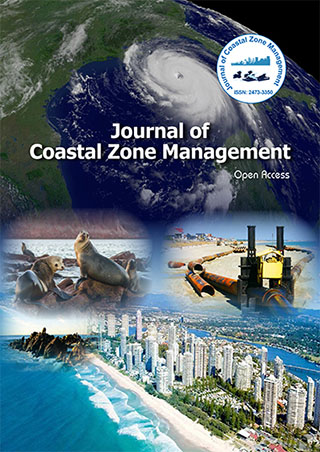Indexed In
- SafetyLit
- RefSeek
- Hamdard University
- EBSCO A-Z
- OCLC- WorldCat
- Publons
Useful Links
Share This Page
Journal Flyer

Open Access Journals
- Agri and Aquaculture
- Biochemistry
- Bioinformatics & Systems Biology
- Business & Management
- Chemistry
- Clinical Sciences
- Engineering
- Food & Nutrition
- General Science
- Genetics & Molecular Biology
- Immunology & Microbiology
- Medical Sciences
- Neuroscience & Psychology
- Nursing & Health Care
- Pharmaceutical Sciences
Diversity of seaweeds and seagrasses in the Egyptian Mediterranean coastal eco-zones
3rd International Conference on Coastal Zones and Oceanography
May 18-19, 2018 Singapore
Mohamed El-Said Farghaly
Suez Canal University, Egypt
Scientific Tracks Abstracts: J Coast Zone Manag
Abstract:
The Egyptian Mediterranean coastal area lies between Sallom West and Rafah East, about 1100 km, enjoying a high economic value and ecological variability. They offer a wide variety of valuable habitats and ecosystem services that have always attracted humans and human activities. Egypt has a promising plan for the management of Mediterranean coastal area including the improvement of fisheries and aquaculture. Macrophytes provide the fuel of life to the coastal ecosystems. Substrates, salinity, water temperature and the water transparency are the most important factors controlling the marine algal biodiversity. Environmental conditions are variable within the 100 m depth of the water along the Egyptian coast. It is closer to the shore to the west and the distance gradually increases to the east. At Port Said, it is furthest from the shore and further east it becomes closer again. This is caused by the alluvial cone that has built up in front of the mouth of the Nile in the Delta area. So, the macrophyte community structures are variable. Although, there were many works on the coastal vegetation, the marine macrophytes were scarcely and occasionally explored. Many lists had been published from Alexandria, some from Port Said, but still the image of distribution along the western and Sinai coasts are vague. We investigated the floristic elements and vegetation types in terms of species composition as well as diversity and adaptation in the different environmental conditions along the coast of Egypt on the Mediterranean. Seasonal field investigations, observations and collections of seaweeds, seagrasses and associated blue-greens were carried out in the Western Egyptian coastal area (2000-2010). About 410 taxa; 30 blue greens and 380 seaweeds were encountered in this work. Comparison and analysis of data collected, with occasional collections as well as previously recorded data and measurements demonstrates five eco-zones for the distribution of benthic vegetation along the Egyptian Mediterranean coast. The five zones are different in the environmental conditions supporting life, reproduction and distribution of seaweeds as well as their diversity. Five species of seagrasses had been encountered in this study for their support of life to many epiphytic algal species as well as the blue greens inhabitants in their meadows. These findings helped in drawing a good picture on the diversity and distribution of macrophytes in time and space, quantitatively and qualitatively. The resulted lists with the knowledge of the dominant currents gave an idea of the possibility of migration for many species from the western basin via the Tunisian and Libyan coasts. This can contribute to the knowledge and development for best practices in managing coastal zones in the Egyptian Mediterranean.
Biography :
Mohamed El-Said Farghaly has completed DSc in Natural Sciences from USTL Montpellier, France. He has over 40 years of experience in biological and environmental problems in tropical and sub-tropical ecosystems, pollution control and management. Being a Founder Head of Marine Science Department, Technical Advisor and Consultant, he had participated and contributed in solving many environmental problems. From 1975 to till date, he is running and conducting researches on the Mediterranean and the Indo-Pacific seas with special interest to the reef problems in the Red Sea and adjacent coasts. He is also a member in many scientific societies in Europe having good contact with the scientific institutions visited in USA, Australia, Europe and Arab countries. He is the author of 118 research works, scientific or environmental reports, theses and notes.
Email:saidfarghaly6@gmail.com
